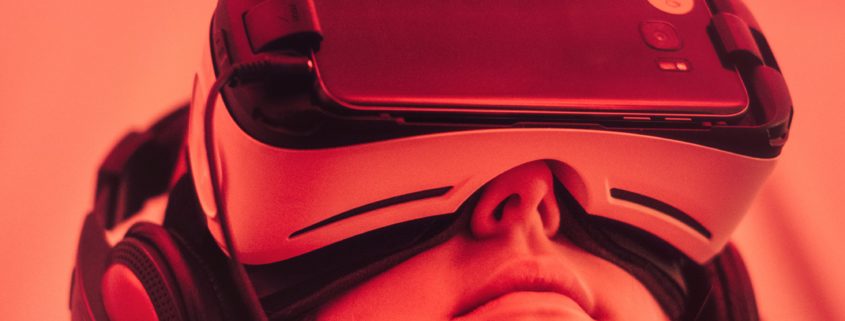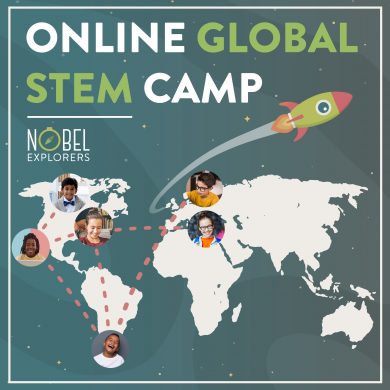Using AI in Learning and Education
Artificial Intelligence (AI) is something we frequently use in our daily lives, often without being aware of it. Have you ever heard of Akinator, for example? It’s an online game featuring a magic genie. He will ask you to think of a character – any character – and through a series of questions, he’ll try to guess who the character is. It ’s like playing 20 questions, only with your computer. Well, Akinator is an AI software: it decides which questions to ask based on your previous answers by imitating the human thought process. This game and many others use near-human intelligence in order to predict and answer your thoughts.
Therefore, AI can be defined as the branch of computer science dealing with the simulation of intelligent behavior in computers. In other words, the goal of developing AI is to create computer systems that can perform tasks that require human intelligence.
Still, when we think of artificial intelligence, most of us tend to think Terminator or Westworld. But in reality, we’re surrounded by AI without really knowing it, because an AI doesn’t need to be a robot – it can simply be a software.
The good news is, we’ve been working on AI’s to aid us in education ever since the 1970s, when Dr. Allan M. Collins created SCHOLAR CAI (Computer-Assisted Instruction). Let’s take a look at how AI’s can be helpful in education and check out some already existing examples.
Tutoring Assistance
Now hold on for a second – this doesn’t mean that your English teacher might turn out to be C3PO! AI’s can be a great help when it comes to tutoring, but they can hardly replace teachers completely. There are a couple of ICAI’s (Intelligent Computer-Assisted Instruction) out there, but none of them have been able to master natural language and tutoring techniques completely.
However, they do possess expert knowledge in a certain area and are equipped with the ability to implement that knowledge in certain problem-solving situations, giving students an excellent chance to practice their school materials outside the classroom.
Among AI’s, there are experts for mathematics, geography, physics, etc., – and all of them can be very helpful to a student who’s struggling with one of these subjects. Such systems can detect (some better than others) what the student’s misconceptions are and through questions and tasks, it can work on solving them. For example, there’s an AI called BUGGY. BUGGY is able to identify student misconceptions when it comes to arithmetic; in other words, it can find bugs in the code of our arithmetic knowledge.
Student-Initiated Learning
Besides tutoring a child directly, ICAI’s can also provide a positive learning environment which allows the child to learn by themselves, usually through solving problems and playing games. The most famous example (and probably the most famous ICAI to date) is Papert’s LOGO. This system guides the child to learn spontaneously, much like we do while learning to walk or talk. LOGO is based on two ideas: 1) That learning something completely new can only be done based on already existing knowledge, and 2) That the learner learns best if they make the ideas their own by understanding and applying concepts, instead of learning them by rote memorization.
LOGO lets the user create programs and simulations in a lot of different areas: they can write poetry, make movies, learn geometry… But nothing is simply handed to them on a silver platter. They have all the necessary tools and guidance, but they need to make their own simulations based on their own way of understanding the material.
When talking about SIL (Student-Initiated Learning), it’s important to mention SOPHIE as well. SOPHIE acts as a guide to solving problems related to electronic equipment. The student is presented with a problem, after which they try to solve it by asking questions and making hypotheses. After they’ve formed the hypotheses, SOPHIE helps them to test it out and, if necessary, debug it.
Helping out with Administrative Tasks
This already makes a lot of professors’ lives easier! There already exist some ICAI’s which are being used to evaluate tests and grade them – automatically. However, ICAI’s are also being developed to grade essays. We’ll probably have to wait a little bit longer on those, but just imagine the amount of extra time it’ll give teachers! It would mean that they’d have more time to prepare material for the next class and that they’d get to use more of their energy to motivate students, instead of downing coffee after coffee while reading hundreds of pages written by their students.
Diagnosis of Learning Challenges
This is one of the most exciting areas when it comes to AI’s. Besides having to teach, grade, and motivate students, teachers sometimes have to help diagnose their students’ learning challenges as well – and that can turn out to be a long and complicated process. Although teachers need to possess a certain knowledge of psychology, that knowledge does not make them a psychologist! It means that they still need to bring in an expert to help, and getting to them can take a lot of time.
But with an ICAI, the whole process could go a lot more smoothly. An AI would be able to ask a series of questions and based on student’s answers, either determine which difficulty is creating the problem (dyslexia, ADHD, etc.) or tell the educator to call for an expert, if it cannot determine it by itself. Alternatively, the AI could be able to call the expert themselves, which means that the educator would only need to supervise the whole process. This could be useful when the educator is overwhelmed with tasks – it’s better to employ an AI to do it quickly and precisely, rather than make a mistake somewhere along the line due to rushing to all the other tasks/students they need to evaluate. With the help of an AI that asks the right questions and comes to the right conclusions, teachers will be able to help out their students much faster and with much more precision.
Remember, behind every AI, there was a team of people developing the science and technology used. Check out Nobel Explorers to see how you can learn and practice many STEM-related concepts that could continue improving upon artificial intelligence.





Yes!!